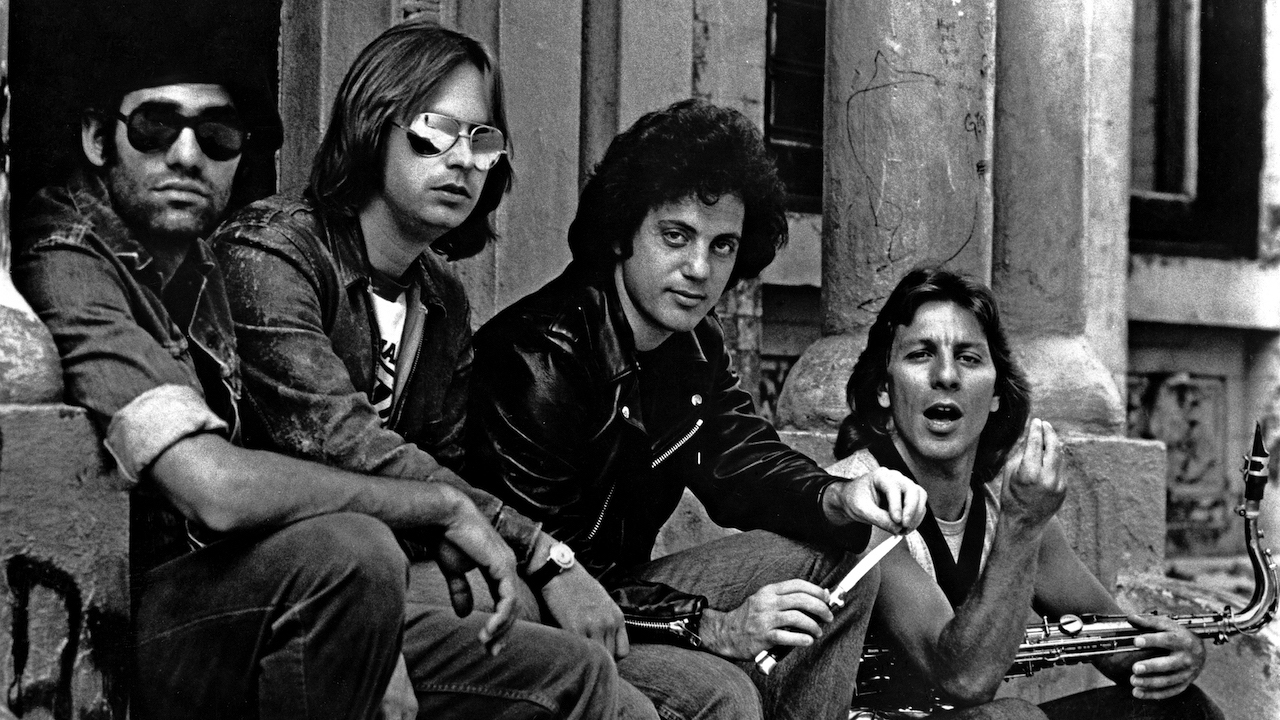“Doug really knew his way around that bass. Billy built the band around him”: How Paul Simon's advice and Doug Stegmeyer’s swinging bassline transformed Billy Joel’s Only The Good Die Young
Doug Stegmeyer was a student of the Beatles and Motown – and his bassline on Only The Good Die Young is a masterclass

When songwriters on the level of Billy Joel and Paul Simon rap on the relationship between lyrics and groove, great results are bound to follow. Such was the case for Only The Good Die Young, a tune Billy Joel wrote in 1977 for The Stranger, his best-selling studio recording to date.
As drummer Liberty DeVitto told BP back in November 2008, Simon popped his head into the studio where Billy and his band were struggling to settle on the groove for Joel’s provocative coming-of-age anthem. Across the room, bassist Doug Stegmeyer sat ready with his Fender Telecaster bass guitar.
“Paul said, ‘Look, the lyric is really heavy, but if you put a light rhythm to it, the lyrics will go over everybody’s head.’ So Billy came up with a new rhythm that allowed Doug to walk on bass.”
Of course, walking was nothing too unusual for Stegmeyer, a studied bassist with a knack for navigating around Joel’s busy left hand. “Doug came from a musical family – his father played clarinet with Glenn Miller and Benny Goodman,” said DeVitto, who wrote a chapter on Stegmeyer for the memoir he compiled after leaving Joel’s band in 2005.
“Doug started playing bass and guitar when he was 14. He was a student of The Beatles and Motown, and also, with his mother’s influence, classical music and show tunes. He fit like a glove with Billy. After he joined in 1974, Billy built his band around Doug. He was the anchor of the group.”
Old friends from their early days on Long Island, DeVitto and Stegmeyer first played in a popular band called Topper. “Then Doug got the gig to tour with Billy. Back then, Billy was using studio musicians to do the albums (Wilton Felder, Emory Gordy, Larry Knechtel, and Joe Osborn among them), and a different band to tour. When he decided to move back to New York, Doug was the only person he kept from his touring band. Billy said he was looking for a New York-style drummer, and Doug mentioned me.”
Aiming to form a core band for both stage and studio, Joel buckled down with Stegmeyer and DeVitto to record 1976’s Turnstiles. “Gradually we brought our friends into the sessions, and essentially Topper became Billy Joel’s band.” Joel and the band followed up the next year with The Stranger, the album that scored the hits Movin’ Out (Anthony’s Song), She’s Always a Woman, Just The Way You Are, and Scenes From an Italian Restaurant.
Get The Pick Newsletter
All the latest guitar news, interviews, lessons, reviews, deals and more, direct to your inbox!
Anchoring the second side of The Stranger, Only the Good Die Young, called for Stegmeyer to dig into his upright and swing training. The chord progression lends litself to chromatic passing tones, a tool Stegmeyer applied liberally throughout his bassline. He also built variety into his line through register changes. While the verse line starts in the middle-register F, he shifts down an octave for the second verse. Be warned: Only The Good Die Young swings hard – play those eighth-notes straight and you’ll miss everything that’s cool about this deeply swung bassline.
Other hallmarks are Stegmeyer’s eighth-note triplet volleys and open-string springboard notes, clear markers of his upright consciousness. “Doug really knew his way around that Fender. He would listen to what Billy was doing and pick just the right notes. He wouldn’t necessarily go for the root – he'd figure out the right note for the chord.”
“A lot of Billy’s piano parts sound like classical music, but I have no training at all – I’m a street musician who learned to play by listening. Doug was right in the middle. He knew classical music, but he also had his hands in the street music. He was the glue that held Billy and me together. What else can I say?” Indeed, there’s maybe no better bass legacy.
For most of his twelve years with Billy Joel, Stegmeyer played a flatwound-strung Fender Telecaster bass modified with two split-coil P-Bass pickups, a Badass bridge, and Schaller tuners. Originally, it had a natural finish, but it was later painted blue with white trim. The bass was willed to Liberty DeVitto before Stegmeyer’s death in 1995.










![[from left] George Harrison with his Gretsch Country Gentleman, Norman Harris of Norman's Rare Guitars holds a gold-top Les Paul, John Fogerty with his legendary 1969 Rickenbacker](https://cdn.mos.cms.futurecdn.net/TuH3nuhn9etqjdn5sy4ntW.jpg)


